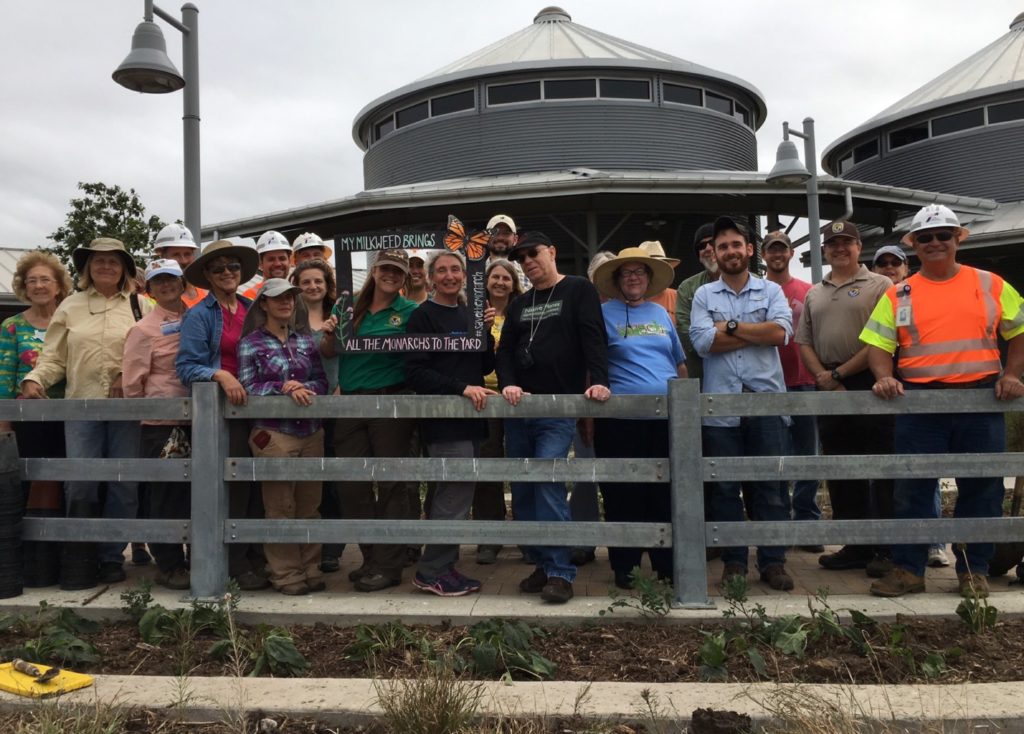
Monarch waystations on Interstate 35
The Native Plant Society of Texas designed and installed Monarch Waystations featuring native pollinator plants at Texas Department of Transportation highway rest stops in Hill County and Bell County in 2016, with partial funding by a grant from the US Fish & Wildlife Service. A grand opening event was held at the Hill County rest stops during Texas Native Plant Week in October 2016.
Thursday October 13, 2016 was Welcome the Monarchs Field Day at the Hill County Safety Rest Area, northbound on Interstate 35 (exit 362A). The public was invited to help with planting the waystation, and to visit staffed outreach booths on site. A similar event was offered on Sunday October 16 at the southbound exit.
As described by Monarch Watch, Monarch Waystations are patches of habitat that provide resources necessary for Monarchs to produce successive generations and sustain their migration.
The gardens are planted with native Texas milkweed and with native plants that are used as nectar sources by the migrating butterflies. Female Monarchs only lay their eggs on milkweeds and a few other plants in the same plant family. Most of the Monarch butterflies east of the Rocky Mountains migrate south to Mexico each winter and return north in the spring, traveling through Texas along a corridor that roughly corresponds to the path of Interstate Highway 35.
Hill County Southbound Safety Rest Area
Rest area off Interstate 35. Demo garden / Monarch Waystation Visit Safety Rest Area website
Hill County Northbound Safety Rest Area
Rest area off Interstate 35. Demo garden / Monarch Waystation Visit Safety Rest Area website
Bell County Southbound Safety Rest Area
Rest area off Interstate 35. Demo garden / Monarch Waystation Visit Safety Rest Area website
Bell County Northbound Safety Rest Area
Rest area off Interstate 35. Demo-garden / Monarch Waystation maintained by Native Plant Society of Texas. Visit Safety Rest Area website
